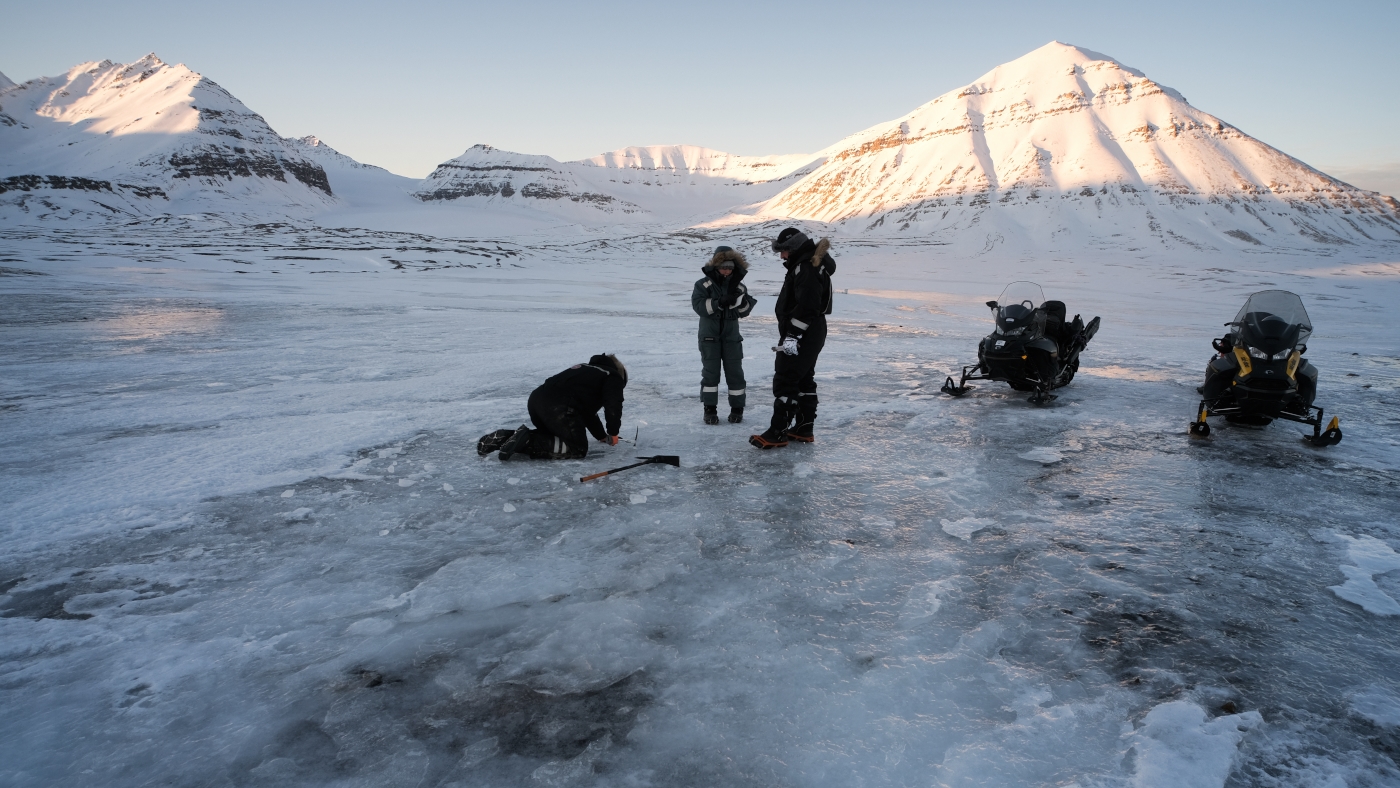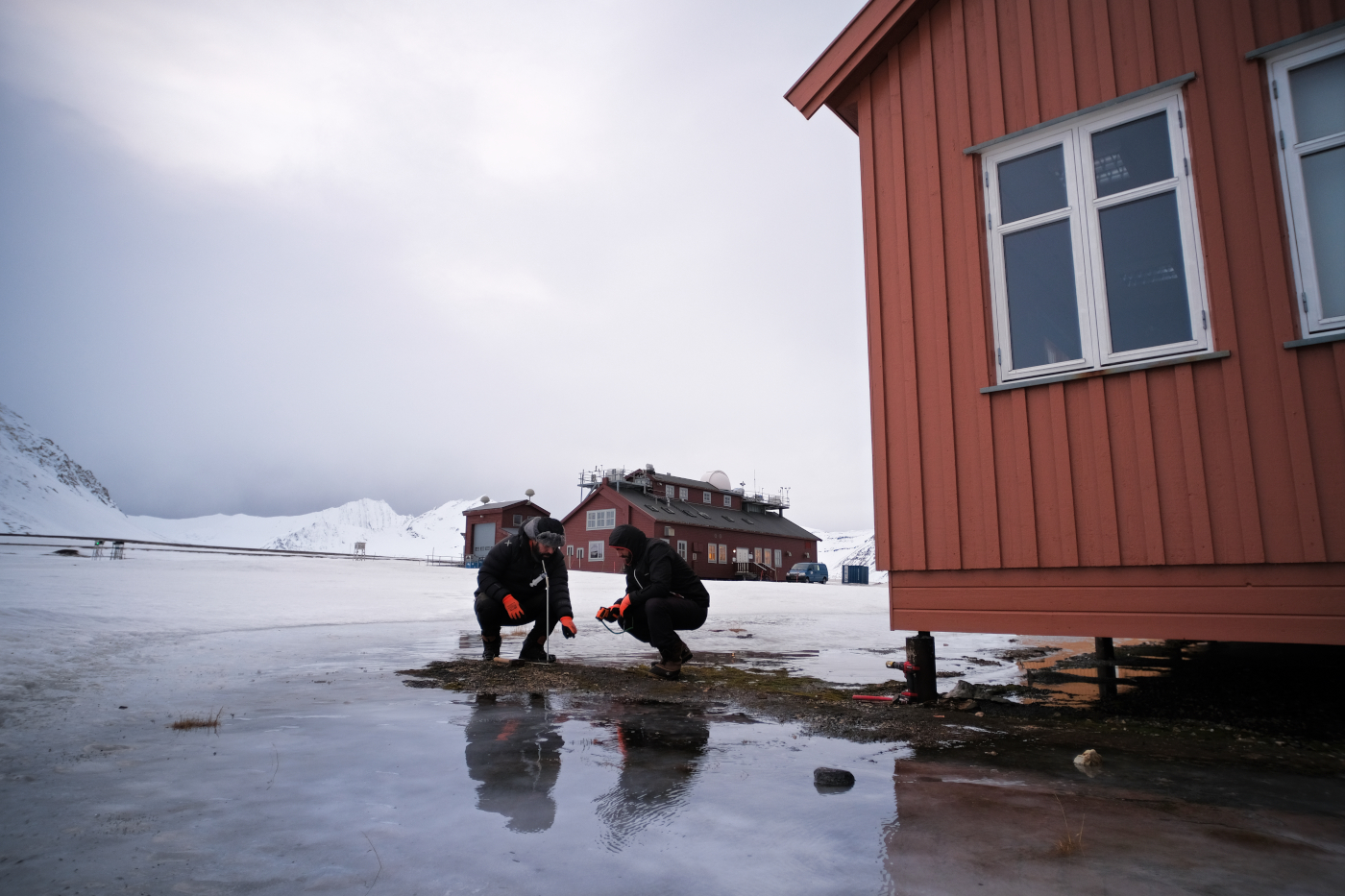3 min to read
The New Arctic
New Arctic - how can we weaken our negligence?

In the collective imagination, when we think of the North and South Poles, we imagine them as idyllic places, far from everything and perceived as fixed in time, immune to any kind of ongoing change. In fact, for several years now, numerous studies have shown that it is here, in the polar zones, that the consequences of climate change are most tangible, with melting ice being the most obvious effect. Unfortunately, I and the team I was with on the last expedition to Ny-Alesund in the Svalbard Islands, in the European part of the Arctic Pole, can confirm this sad evidence.
The team was composed by my supervisor Donato Giovannelli, science communicator and photogapher Jacopo Pasotti, phd student Jacopo Brusca,and myself. We ended up in a “New Arctic”, characterized by a February disguised as a spring month, thus finding an almost completely exposed tundra, not covered by layers of ice and snow, as it should be. We were prepared for cold temperatures (typically -40°C for the windchill) and to admire the dense snow cover everywhere. Instead, we encountered an anomalous Arctic winter landscape with temperatures around 0°C and soil patches separated by thin white snow zones. We expected to be able to collect samples with drill bits and heavy equipment, but in some cases, surprisingly, we only needed a spoon to collect melted permafrost samples. In addition, it was not always easy to reach the sampling sites because the snowmobiles skidded on the ice.

The goal of this expedition was to collect permafrost samples from the Arctic winter, considering the scarcity of data from this period in the literature and the possibility of comparing them with data collected during previous expeditions. I’m very curious to find out what these permafrost samples will tell us, as they are not isolated, but witness to an unconventional Arctic winter. In addition to the DNA extraction techniques that will allow us to know the microbial composition of the permafrost, we also intend to study the transcriptome, the set of all messenger RNA (mRNA), molecules that transmit the genetic information of the DNA: this branch of biology describes the active genes of the cells, enriching the portrait of the active metabolisms in the collected samples. The study of the microbial communities present in the permafrost will be useful to understand the impact of climate change on them and, conversely, how microbial activities can increase it, triggering a vicious circle. What could be the microbial contribution to climate change? Given their invisibility to the naked eye, it is hard to imagine that microbes release gases such as CO2 and CH4, known for their negative role as greenhouse gases. But they do! And we are trying to study their production rates on a small scale, by setting up microcosm experiments in small containers where permafrost samples have been incubated, in order to have a more complete overview of their activities and their impact on the climate.
Before I left, I was focused and curious about my work approach in an extreme scenario that was completely new to me. I was also looking forward to seeing the Northern Lights: a dream finally coming true in a unique place. Everything was amazing. But I also saw with my own eyes the effects of our fast and unconscious way of life, in strong contrast to the slow Arctic life, which is changing (and not slowly!). To be honest, I began to feel a great sense of responsibility for my future on Earth when I saw just a little snow in Ny-Alesund, did not feel cold, and listened to the definition of the “New Arctic” by Donato Giovannelli and the Jacopo Pasotti. So the real question is: “Why did I not pay attention to the climate warning before?
